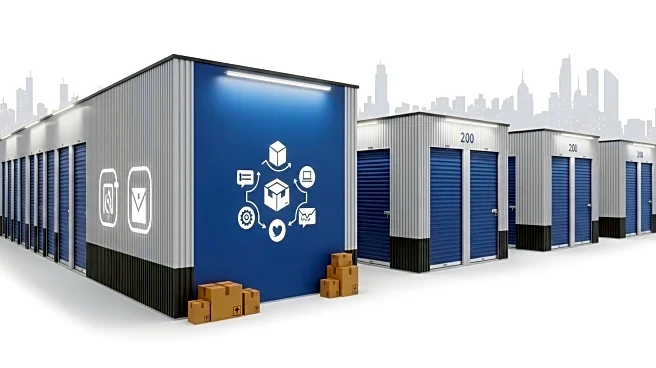What's Happening?
The European self-storage market is experiencing significant growth, driven by urbanization and the e-commerce boom. As cities like London, Paris, and Berlin increasingly develop micro-apartments, the average urban living space is predicted to decrease by 8% by 2030, necessitating alternative storage solutions. Medium-sized storage units, ideal for seasonal gear and online shopping overflow, account for 46% of demand. Additionally, e-commerce has led to increased inventory needs, with 70% of EU customers shopping online in 2024. Self-storage facilities are evolving into hybrid fulfillment hubs, offering 24-hour access and flexible leases. The market, valued at USD 26.6 billion in 2024, is projected to reach USD 34.7 billion by 2033, expanding at a CAGR of 3.0%.
Why It's Important?
The growth of the self-storage market reflects broader trends in urban living and consumer behavior. As living spaces shrink, the demand for flexible storage solutions rises, impacting real estate development and urban planning. The integration of storage facilities into transport-oriented developments highlights their role in modern urban infrastructure. For businesses, the shift towards self-storage as fulfillment hubs underscores the changing landscape of logistics and inventory management, offering cost-effective solutions for SMEs. This trend also indicates potential shifts in consumer habits, with increased reliance on e-commerce and flexible living arrangements.
What's Next?
The self-storage market is likely to continue evolving, with operators integrating more technology to meet consumer demands. The expansion of tech-enabled storage solutions, such as QR-code entry and Wi-Fi access, will enhance the functionality of these facilities. As urbanization progresses, municipalities may further incorporate storage solutions into city planning, potentially influencing zoning laws and real estate development. Additionally, the market may see increased consolidation, as evidenced by recent acquisitions and joint ventures, positioning major players to capitalize on growing demand.
Beyond the Headlines
The rise of self-storage facilities also raises questions about environmental impact and sustainability. As urban areas become more densely populated, the need for efficient land use and resource management becomes critical. The development of storage facilities must balance economic benefits with environmental considerations, potentially driving innovation in sustainable building practices. Furthermore, the cultural shift towards minimalism and decluttering may influence consumer attitudes towards storage, prompting operators to adapt their offerings to align with changing values.











